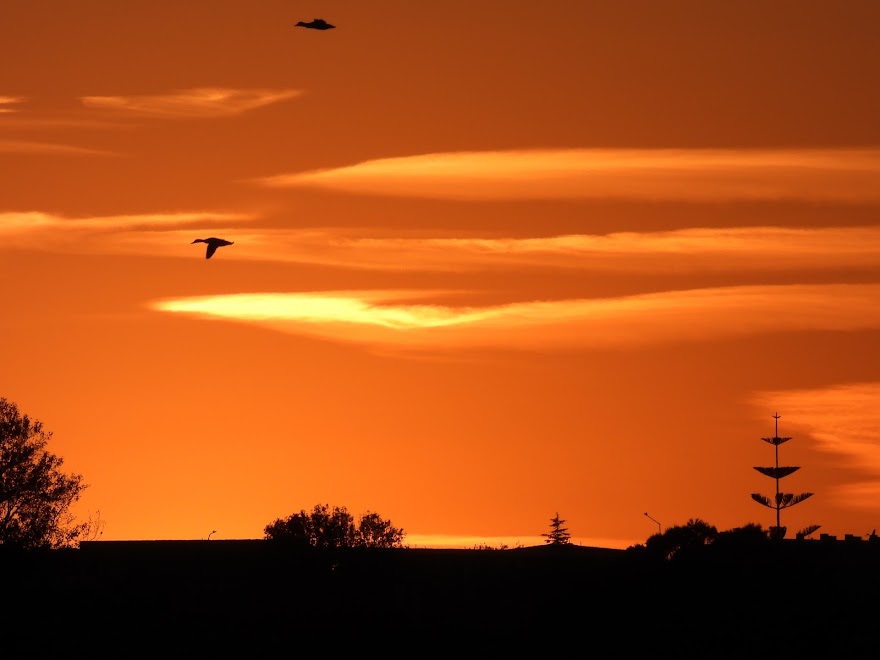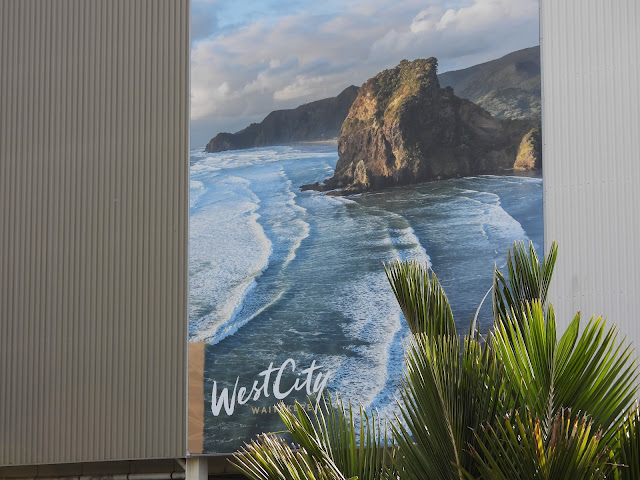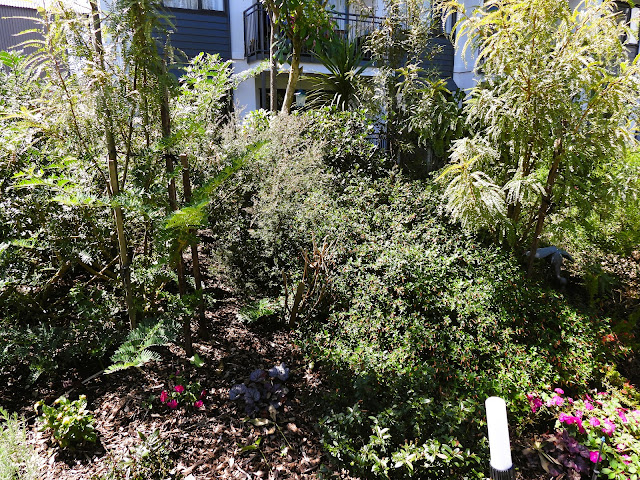It's a well-known fact that old men like to sit and watch the world go by. Now that I have attained that honorable appellation myself, I can attest to its truth. In fact, many of you know it too, because for some time now, I have been sharing bits of my world with all of you.
This post is one that I had fun producing. I took the pictures as I sat on our Waitakere Gardens balcony in the sun on a fall day in New Zealand and observed. There was a lot of activity below me. For some reason, it was a day (Wednesday, March 22, 2023) when lots of families visited residents. There was constant coming and going and the shouts of children being children.
I soon discovered that there was a lot of activity up in the Nikau palms that ring our roundabout as well. Activity of another sort. The European honey bees, Apis mellifera, from the hives in our very own gardens, were present, and zipping around at great speed. I got excited.
Being old, I have come to rely on what I like to call my bionics. My hearing aids are one example.
I have also come to think of my camera as a kind of extension of my eyes. When I saw what was happening in the palms, I grabbed my camera, and started snapping. With its help, I was able to reach out and pull that fruiting palm closer to me. Let's get started.
This was my view from my balcony. I am looking at the flowers that are obvious in the tree closest to me.
I've got the camera zoomed in. Here comes a bee now. Soon we're going to go a lot closer. The camera can not only bring bees closer to me, it can stop them in mid-air.
You can even see the pollen basket (corbicula) on its leg if you look carefully enough.
I have just a few more. They're a little fuzzy, but quite close.
Is it any wonder that the honey that is produced here at Waitakere Gardens is so good? The bees have innumerable and diverse sources of sweetness to draw upon.
I know this has been a long post, but I have just two more shots I'd like you to see and mull over.
The first one is another of the palms in the drive. The top portion is called the spathe, which splits along one side and the inflorescence emerges.
Now take a look at a super close-up of an individual flower within the inflorescence. I love how its structure looks somewhat similar.
Thanks for sharing a seat with me this afternoon. Didn't the sun feel good? -djf










.JPG)

















































